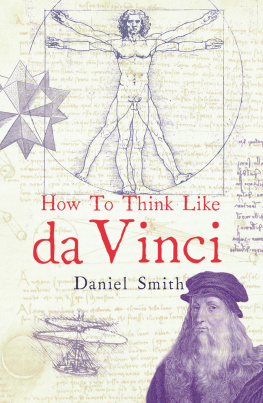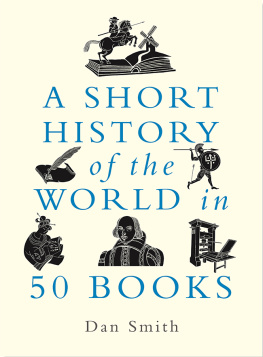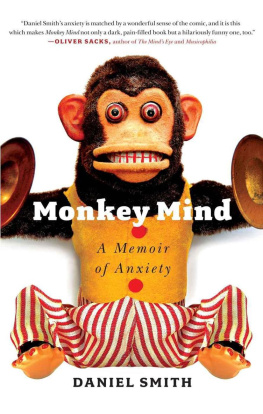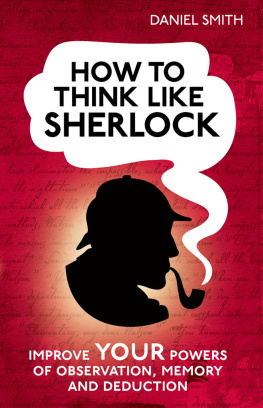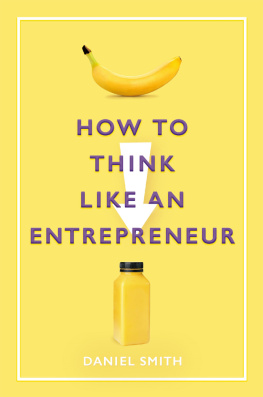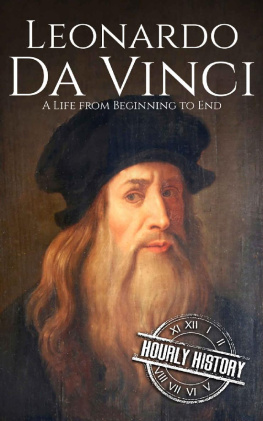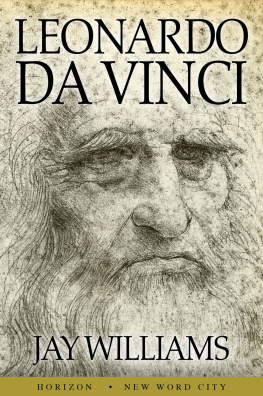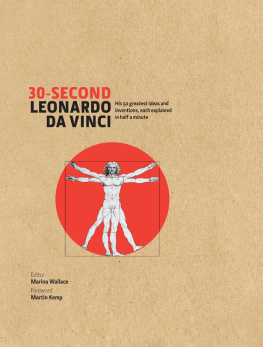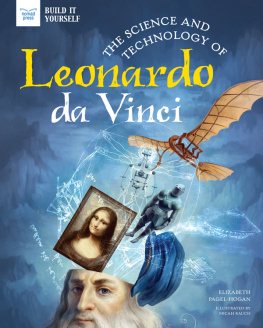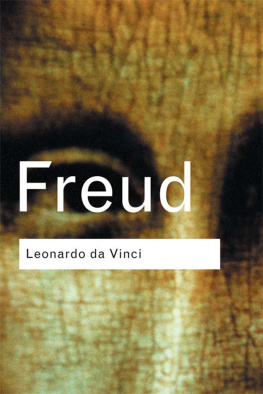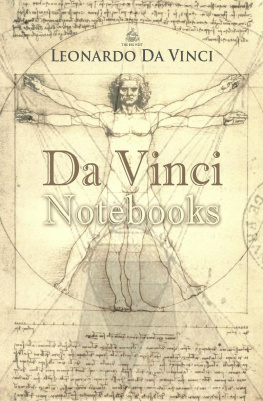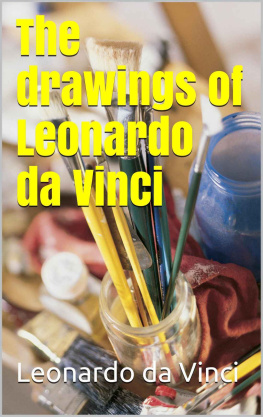By the same author:
How to Think Like Sherlock
How to Think Like Steve Jobs
How to Think Like Mandela
How to Think Like Einstein
How to Think Like Churchill
How to Think Like Bill Gates
For Rosie and Lottie
First published in Great Britain in 2015 by
Michael OMara Books Limited
9 Lion Yard
Tremadoc Road
London SW4 7NQ
Copyright Michael OMara Books Limited 2015
All rights reserved. You may not copy, store, distribute, transmit, reproduce or otherwise make available this publication (or any part of it) in any form, or by any means (electronic, digital, optical, mechanical, photocopying, recording or otherwise), without the prior written permission of the publisher. Any person who does any unauthorized act in relation to this publication may be liable to criminal prosecution and civil claims for damages.
A CIP catalogue record for this book is available from the British Library.
ISBN: 978-1-78243-458-0 in hardback print format
ISBN: 978-1-78243-467-2 in paperback print format
ISBN: 978-1-78243-459-7 in e-book format
Designed and typeset by Envy Design Ltd
www.mombooks.com
Contents
He was like a man who awoke too early in the darkness while everyone else was asleep.
DMITRY MEREZHKOVSKY , 1901
In the five and a half centuries or so since his birth, Leonardo da Vinci has become a cypher. He is perhaps the best-known artist of all time. Ask someone without the vaguest interest in fine art to name an artist and there is a fair chance that if they dont mention Picasso, it will be da Vinci instead. His Mona Lisa is the single most recognizable picture in the world, not least because it has so often been parodied. Student walls across the globe have for generations been adorned with images of that enigmatically smiling woman embellished with thick-rimmed spectacles, giving a peace sign or smoking a joint.
Da Vinci has also become a symbol of genius. Whether it is useful to see him in these terms is debatable, for the concept of genius is a fluid one. What makes a genius? Extreme intellect? Uncanny natural abilities? Perhaps even some kind of divinely appointed superhuman power? The word itself tends to alienate the subject of the term from the world at large. Da Vinci may have had the characteristics of genius, but to see him simply in those terms is to render him distant, unobtainable, unearthly. It is virtually impossible to see da Vinci the genius as one of us.
It is also to do this extraordinarily complex and multi-layered man a disservice. Certainly da Vinci was blessed with extraordinary gifts across a range of fields. It is, as some academics have suggested, quite possible that he possessed a brain physiologically different to the vast majority of us. His ability to master disparate disciplines with such apparent ease might, for instance, indicate extremely rare rates of development in both the left and right spheres of the brain. It may also have been wired in such a way that he could see fleeting actions almost as if in slow motion. But for all this, da Vinci also faced many of the challenges with which life confronts the rest of us, along with a few more besides. Crucially, he was familiar with failure and believed that time was his constant enemy, the clock running out on several of his most ambitious projects.
His personal life was somewhat complicated too, to say the least. The background into which he was born gave little hint that he was destined for greatness. Emotionally, he never quite recovered from the lack of a stable parental upbringing, instead being raised by his extended family before being launched into professional life when no more than a young teen. His adult relationships, meanwhile, were impacted by his assumed homosexuality.
Whatever his personal demons, his creative output is unmatched in history. His known artworks would mark him out as one of the most extraordinary people who ever lived, but they are just a part of a much bigger landscape. The brilliant painter, sculptor and musician was also an outstanding scientist, who famously designed flying machines centuries ahead of their time and documented the human anatomy more thoroughly than anyone before him. He was a talented mathematician, a quite spectacular engineer and architect, an inventor who came up with everything from kitchen gadgets to prototype submarines, a botanist, designer, cartographer, philosopher ... we could go on.
Along with relatively few completed artworks, he left thousands of pages of detailed notes, which provide us with perhaps our best source to investigate his mind and personality. Such was his fame even in his own lifetime that his life was well documented by contemporary biographers, most famously Giorgio Vasari (who described da Vinci as a man of regal spirit and tremendous breadth of mind).
Using these sources and with the benefit of centuries of subsequent scholarship da Vinci the man can be excavated from the myths that have built around his name. He proves even more interesting than his legend would suggest. In the pages that follow, I hope to take you on a journey through his complex character, looking at what made him great, but also at the flaws, failings and frailties that render him recognizably human.
Liana Bortolon wrote in The Life, Times and Art of Leonardo:
Because of the multiplicity of interests that spurred him to pursue every field of knowledge ... Leonardo can be considered, quite rightly, to have been the universal genius par excellence, and with all the disquieting overtones inherent in that term. Man is as uncomfortable today, faced with a genius, as he was in the sixteenth century. Five centuries have passed, yet we still view Leonardo with awe.
But the veil of genius has shrouded him for too long. To rediscover Leonardo da Vinci the man is a rich and rewarding experience.
Below is a list of the existing paintings on which da Vinci is generally accepted as the major, or sole, contributor (along with their suspected dates of production and current location). Please note, only one example of his sculpture survives, a small beeswax equestrian model a study for a much larger work made in 1508 and now privately owned.
Portrait of Ginevra de Benci (c. 1474, National Gallery, Washington, D.C., USA)
The Annunciation (14725, Galleria degli Uffizi, Florence, Italy)
The Annunciation (c. 1478, Muse de Louvre, Paris, France)
Madonna of the Carnation (147880, Alte Pinakothek, Munich, Germany)
Benois Madonna (c. 1478, Hermitage, St Petersburg, Russia)
Saint Jerome (148082, Pinacoteca Vaticana, Vatican City, Italy)
The Adoration of the Magi (1481, Galleria degli Uffizi, Florence, Italy)
The Virgin of the Rocks (14836, Muse de Louvre, Paris, France)
Portrait of a Musician (c. 1485, Pinacoteca Ambrosiana, Milan, Italy)
Lady with an Ermine (148890, Czartoryski Museum, Krakow, Poland)
The Virgin of the Rocks (14911508, National Gallery, London, UK)
Portrait of a Lady (c. 1495, Muse de Louvre, Paris, France)
The Last Supper (14958, Refectory of Santa Maria delle Grazie, Milan, Italy)
Sala delle Asse (14978, Castello Sforzesco, Milan, Italy)
Portrait of Isabella dEste (14991500, Muse de Louvre, Paris, France)
The Virgin and Child with Saint Anne and Saint John the Baptist (c. 1500 or
Next page
